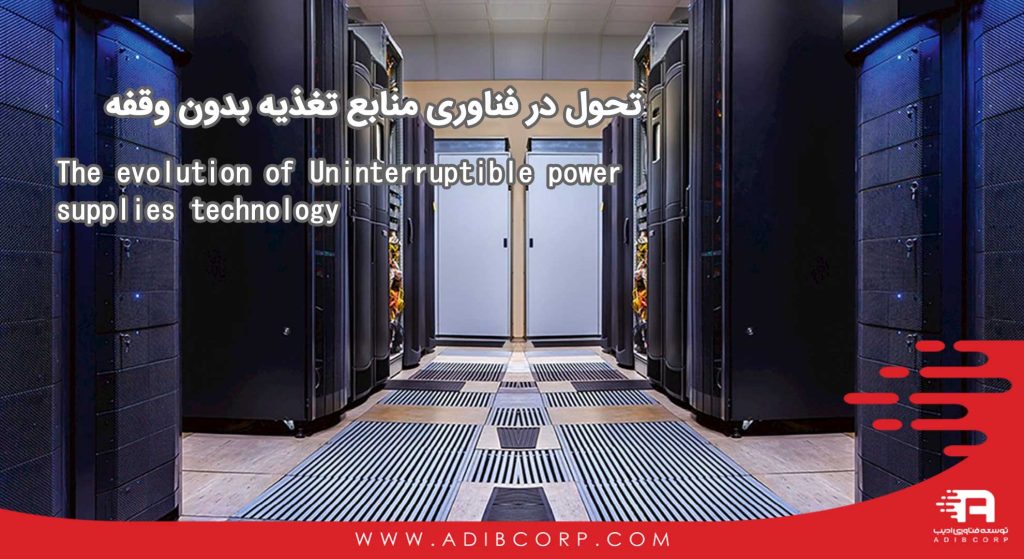In this article, Eaton’s Country Manager for Ireland, Phil Kane explains the evolution of Uninterruptible power (UPS technology) and discusses the role that it can play in the energy transition.
Uninterruptible power supplies (UPSs) are a crucial piece of technology wherever critical or sensitive equipment requires constant and clean power, from medical facilities and data centers to emergency and industrial processing systems.
While the history of UPSs is somewhat shrouded in mystery, with no clear date for the invention and no inventor who can claim it, they have been manufactured at Eaton’s plant in Finland since 1962. Since then, they have come a long way, with Eaton alone creating over 200 patented innovations related to backup power and power conversion technology. And thanks to recent advances, UPSs can now also play a decisive role in making the energy transition happen.
The evolution of Uninterruptible power supplies technology
A UPS is a power electronic device with a battery at its core that has two basic functions: backing up and cleaning up the power supply. It thus functions as a sort of insurance for electrical loads, making it a vital component in ensuring business continuity.
In the event of a short blackout, a UPS protects critical equipment by continuing to supply it with power from batteries, typically for five to 30 minutes, thereby bridging the gap until a generator starts; and during longer power outages, it allows for graceful shutdowns to avoid damage or loss of data.
But even when power is available, its poor quality may threaten equipment through voltage surges, sags and transients, particularly in the case of today’s ever more miniaturized and susceptible devices. A UPS safeguards the functioning of these devices by “smoothing” the voltage provided by the grid.
Recent developments in UPS technology
While the first such devices were analogue and had a capacity of only a few kilowatts, modern UPSs with digital signal processors can handle large volumes of data, which allows for much more advanced functions and control, combined with several megawatts of power.
In parallel, UPS efficiency has improved, with power losses reduced from about 20% 30 years ago to 3% today and the use of smaller, transformerless designs that require less raw material. Moreover, the latest models benefit from faster switching, enhanced power electronics and more efficient cooling – all of which are important considerations in the face of rising energy and cooling costs and the drive towards decarbonization.
Together, these advances have enabled modular set-ups that offer easy scalability and maintenance – all that needs to be done to expand capacity is to add another module, and individual modules can even be serviced while the rest remain online. As a result, the latest UPSs provide greater reliability, availability and resilience at a lower cost.
And while UPSs traditionally relied on lead-acid batteries, these are now being complemented by lithium-ion batteries that are smaller, lighter and better suited for bridging longer periods without power. Add to this the development of supercapacitors, which are not batteries in their own right but can store and rapidly discharge large amounts of electricity, and entirely new features become possible.
Smarter grids thanks to UPSs
In other words, the role of UPS technology is moving from protection of critical loads to protection of the grid at large. The latest generation of UPSs, such as Eaton’s EnergyAware system, are grid-interactive, meaning they can handle bidirectional rather than just unidirectional energy flows: instead of simply drawing power, these smart UPSs are also able to feed excess energy back to the grid – without any compromises to their operations.
On the one hand, this facilitates short- and long-term peak shaving to reduce the load on the grid, and on the other, it supports the expansion of renewables, which are subject to greater fluctuations than conventional, fossil energy sources. By enabling grid stabilization, more local power management and advanced control of energy flows, modern UPSs can thus make an important contribution to the energy transition.
Further developments will be less about improving the efficiency of the UPS itself, but about how it can control, store and leverage different energy sources in the interest of sustainability. For instance, if the electricity stored in the UPS of a data centre comes from 100% renewables, then power losses of 3% do not create any additional emissions and have less of an impact on sustainability.
Future challenges
Increasingly, the focus on life-cycle emissions will therefore shift away from those caused by the operations of the UPS to the sustainability of the manufacturer’s processes. Also known as cradle to gate, this approach emphasizes the carbon footprint of a product from the start of production to the moment it is sold. For customers, it is thus becoming ever more important what resources and how many go into making a UPS, including the type and amount of energy consumed during production.
With UPSs approaching the limits of what’s possible in terms of efficiency gains, attention is now being paid to other aspects such as the power source of backup generators, which is still frequently diesel fuel or gas, neither of which is ideal.
In the discussion around the services that UPSs can perform for the grid, it’s also important not to lose sight of their primary purpose, namely to deliver clean, uninterrupted power to critical equipment. That being said, the UPS of the future is able to do much more than that, by acting as an essential building block in the transition towards net-zero.
* The term net zero means achieving a balance between the carbon emitted into the atmosphere, and the carbon removed from it. This balance – or net zero – will happen when the amount of carbon we add to the atmosphere is no more than the amount removed.
Click here to check the source



